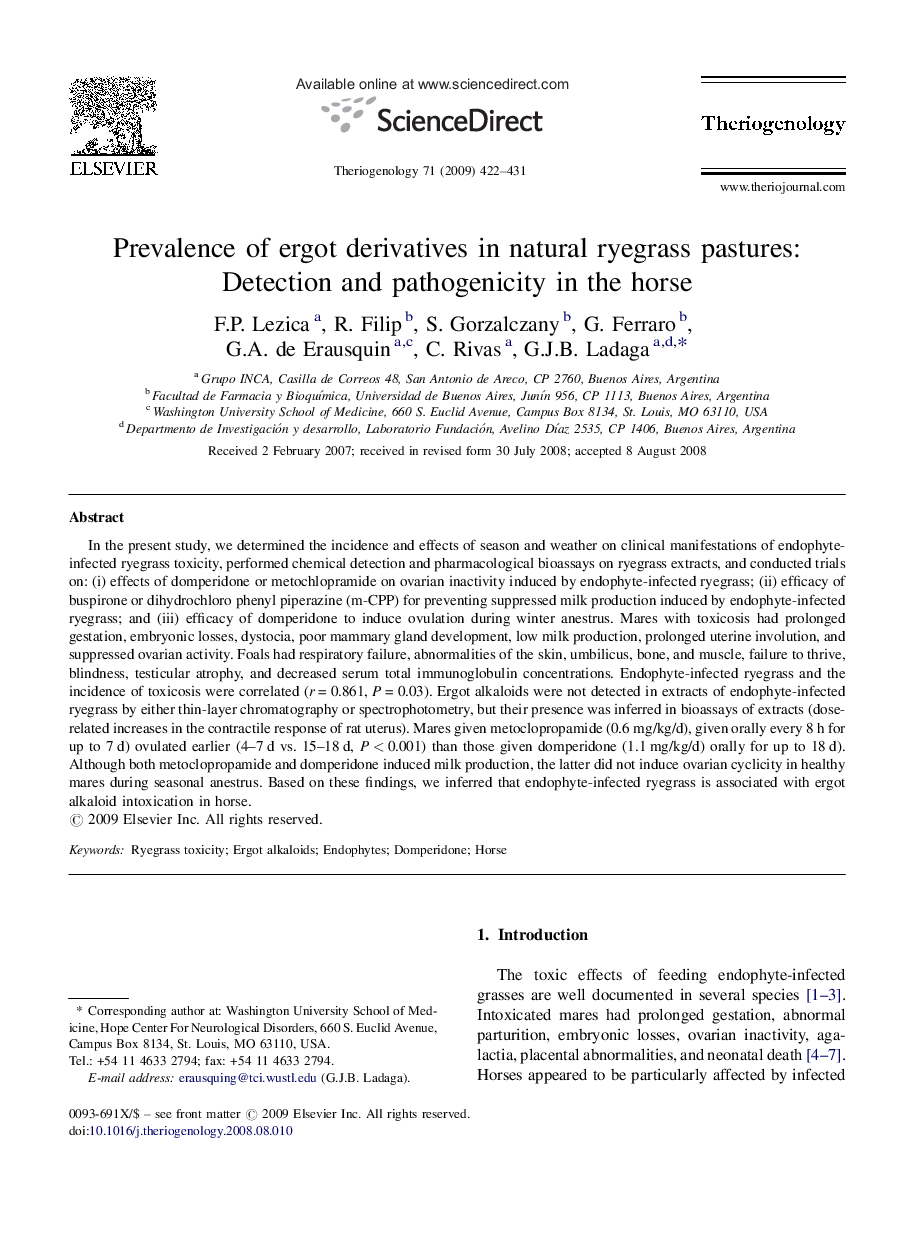| Article ID | Journal | Published Year | Pages | File Type |
|---|---|---|---|---|
| 2096087 | Theriogenology | 2009 | 10 Pages |
In the present study, we determined the incidence and effects of season and weather on clinical manifestations of endophyte-infected ryegrass toxicity, performed chemical detection and pharmacological bioassays on ryegrass extracts, and conducted trials on: (i) effects of domperidone or metochlopramide on ovarian inactivity induced by endophyte-infected ryegrass; (ii) efficacy of buspirone or dihydrochloro phenyl piperazine (m-CPP) for preventing suppressed milk production induced by endophyte-infected ryegrass; and (iii) efficacy of domperidone to induce ovulation during winter anestrus. Mares with toxicosis had prolonged gestation, embryonic losses, dystocia, poor mammary gland development, low milk production, prolonged uterine involution, and suppressed ovarian activity. Foals had respiratory failure, abnormalities of the skin, umbilicus, bone, and muscle, failure to thrive, blindness, testicular atrophy, and decreased serum total immunoglobulin concentrations. Endophyte-infected ryegrass and the incidence of toxicosis were correlated (r = 0.861, P = 0.03). Ergot alkaloids were not detected in extracts of endophyte-infected ryegrass by either thin-layer chromatography or spectrophotometry, but their presence was inferred in bioassays of extracts (dose-related increases in the contractile response of rat uterus). Mares given metoclopropamide (0.6 mg/kg/d), given orally every 8 h for up to 7 d) ovulated earlier (4–7 d vs. 15–18 d, P < 0.001) than those given domperidone (1.1 mg/kg/d) orally for up to 18 d). Although both metoclopropamide and domperidone induced milk production, the latter did not induce ovarian cyclicity in healthy mares during seasonal anestrus. Based on these findings, we inferred that endophyte-infected ryegrass is associated with ergot alkaloid intoxication in horse.
